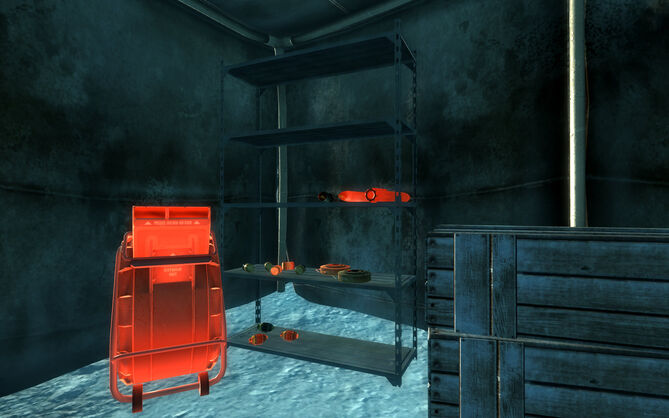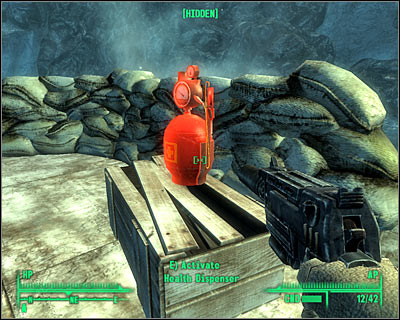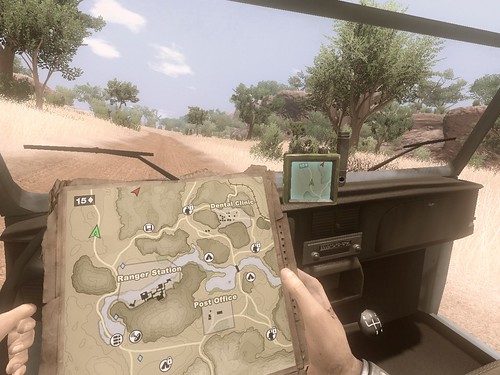Essentially a 3rd-person cover shooter, Uncharted 2 offers more freedom to players than similar games like Gears of War. Instead of just going from cover to cover, the characters can jump and climb around the map, adding an aspect of verticality to a traditional cover shooter.
The competitive modes feel balanced fairly well, with no weapon combination overpowering others - each weapon is good for a certain situation. Each player can have 2 boosters on their character, Uncharted's version of perks from Call of Duty. Below are some observations I've made regarding weapons and boosters:
WEAPONS AND TOOLS
GAU-19: A very loud chaingun, players know where you are immediately the minute you start firing one because
a) the sound can be heard pretty much anywhere on the map and
b) it's always in the same set location on the map, meaning that as soon as players on the enemy team hear you firing one of these, they're going to instantly know where you are
The GAU is only useful in situations where enemies are grouped up near the gun, which doesn't happen often. Even if you have direct line of sight to an opponent across the map, he'll either roll out of the way or kill you.
Riot Shield: Protects you from bullet fire from the front, but seriously slows down your movement speed. I find the shield useless because a grenade toss can easily eliminate a person with a shield, and the grenade doesn't even have to land behind the shield. The enemy can also easily run around you and kill you from behind before you can turn around quick enough. Because of the nature of the game, mobility in Uncharted 2 is always more important than protection.
BOOSTERS
Competitive multiplayer also offers boosters, which are perks that players can use to help them have a certain edge (like in Call of Duty). Things like starting off with an extra grenade or having more pistol accuracy. You buy all these with the money that you earn from matches. Top players can choose to purchase Badges of Honor, which act like negative boosters, providing a disadvantage. In return, every 5 kills they get will net them a nice XP bonus, creating a risk/reward structure. These range from having half health to a carrying half a loaded clip to the worst one that lets enemy players see your name through walls, acting as quite an ego boost.
Below are my thoughts regarding some specific boosters:
Break Up: Lets players destroy destructible objects faster. Useless because the only destructible objects that act as cover are a few wooden boxes (which aren't good cover anyways) that are found in a few maps. Propane tanks and generators can be destroyed easily without this perk with a few extra bullets, which is not a problem if you have an automatic weapon, and everybody starts off with an AK - an automatic weapon. If the maps were designed to offer more destructible cover, I could see this booster being useful, but as of right now, it's just a waste of a slot.
Hell Blazer: Move faster with the GAU-19. Still not fast enough to be of any use. Plus, a player has to get to the GAU first.
Turtle: Move faster with the Riot Shield. Moving faster isn't really a big boost if players using shields die from grenades most of the time. If this booster allowed the riot shield to withstand a grenade blast up close, I could see it being useful for players that like the shield. Also, it has the same issue of the player getting the riot shield first to be useful.
Once again, a big negative of the above 2 boosters is that they're too specific and not worth the booster slot when there's better ones available that always offer a passive bonus.
There are other specific boosters like Rocket Man and Launch Man which increase the ammo of the game's most powerful weapons - The Hammer and the RPG, but those are worth it because both weapons are the most powerful in the game, netting easy kills.
Situational Awareness: The player can stop and with the press of a button, see close-by enemy player names through walls. This booster breaks elimination games, where the goal is to eliminate the opposing 5 player team, offering no respawns when players get killed.
The thrill of elimination games comes from a cat and mouse hunt metagame. If there's 1 or 2 enemy players left, you can just find them using this booster instead of carefully trying to spot them, all while worrying about your safety, offering no thrill or challenge. I've had situations where me and another player on the opposite team were the last ones left and we both had Situational Awareness. Afraid to attack each other, because we both knew where we were, the match usually resulted in a tie.
Evasion: Immunity to Situational Awareness. I think having a booster that nullifies another one is a poor design decision, as each one of them should offer something positive without having to worry about what perks other player are using. Modern Warfare 2 did this even more, and I didn't like it either. It ended up being a stacking game to see who's perk can negate what. Perks and booster should be used to enhance your play, no matter what other players are using.

POST-LAUNCH SUPPORT
Naughty Dog has been providing excellent multiplayer support, releasing DLC packs with new co-op modes, multiplayer maps, and skins. An interesting thing that they've starting doing is a gameplay mode that changes every weekend called The Lab, which acts similar to Left 4 Dead 2's mutation modes - offering a special randomized gameplay type. Modes like Pistols and Grenades only, RPG's only, or team 3 vs 3, instead of 5 vs 5 keep the multiplayer competitive scene fresh with new and interesting options. Variation never hurts.
During many holidays such as Christmas and Thanksgiving, Naughty Dog has also been doubling the amount of XP players can earn, enticing players to play more during these weekends. One weekend even had 5x XP! After that, everyone that I played online with seemed high level.
Occasionally, you can also spot a Naughty Dog employee in a game with a red paw next to their name. It's always cool to see developers playing together with their players, supporting the lifecycle of the game.
MAXING OUT
The max level cap in multiplayer is really high and while it's a nice goal, average players will never even come close, as it takes way too much XP to level up starting around level 45. I think doing something similar to prestiges in Call of Duty would have been a better option. On top of that, Naughty Dog raised the max level cap twice - to lvl. 70 and then 80, making reaching the end even more insurmountable.
BALANCE CHANGES
Even though I enjoyed the multiplayer of Uncharted 2 through all the patches, Naughty Dog has been changing multiplayer balance a lot since game launch. At the start, players had more health. Then a patch made everyone weaker so people weren't so bullet-spongy anymore. However, players complained that everyone was too weak and eventually, player health was raised a bit, although never as high as before.
Same goes for grenade damage and radius - it was adjusted multiple times. At launch, grenades were too powerful and they were patched to be weaker. However, they became too weak, and thanks to complaints, their explosive radius was extended.
I understand that a game is always evolving, and it's good to listen to your community and let them playtest the game, but when you have to make such drastic changes multiple times, it becomes dangerous and you risk alienating some of your user base.
QUIT PENALTIES
Another thing that was added post launch were penalties for match quitters. Quitting a game in-progress drastically affects your team since there are only 5 players on a team. To combat quitters, a solution was put in place where the 1st quit would give the player a timeout penalty of 30 secs. During this, you can't do anything but sit and watch the countdown clock tick down. This is a bad decision. There's nothing worse for players than to have their valuable time taken away, even if it is just a measly 30 secs.
The 2nd time you quit, you forfeit some XP, which I have no problem with. In my opinion, players should forfeit their XP just for quitting the 1st time, not their time. The 2nd time quitters should be demoted a level.
If you can't play a 15 minute match, then don't - simple as that. Wasting XP is totally fine, just don't waste my precious time!
ELIMINATION MODE
In Elimination, my favorite multiplayer mode, players don't respawn after they go down. Whichever team eliminates all the opposing players scores a point. First to 3 points wins. This is similar to Counterstrike matches and the Search and Destroy mode in Call of Duty: Modern Warfare.
What really breaks the Elimination games (besides the Situational Awareness booster) are the power weapons like the Hammer and the RPG.
Having these weapons be there during Elimination games is both a pro and a con. On one hand, you have guaranteed chokepoints - spots that players will meet at, resulting in conflict - something that designers strive to make happen in a multiplayer game.
On the other hand, whoever grabs the weapon first has a good chance of winning because the RPG and the Hammer are very easy to get kills with.
If you decide to not go for the power weapons and play the game your way, you're already at losing odds, because whoever gets the power weapon has a huge advantage on their side. This makes it so that you pretty much must go towards the power weapons and pick it up out of fear that the other side will do it.
It would have been cool to see a vote on whether to have power weapons in elimination games, much like a map vote before the game starts.
Overall though, playing Uncharted 2 online has been an absolute blast and I would say that it's my favorite online game on the PS3. Since launch, players have seemed to get better and better, upping up the competition, especially if people are playing together in parties. With around 35k players playing worldwide every night, it's a healthy community of players that I am happy to contribute to.








